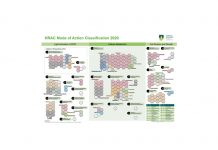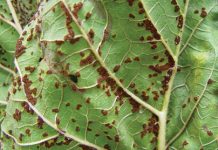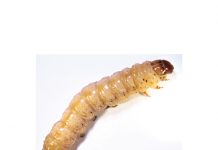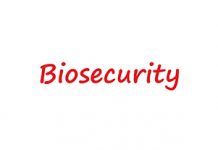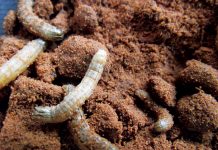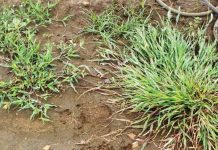
CEO, CropLife
South Africa
Pest management is only one aspect of overall crop production that needs to be considered by a grower. It cannot be considered on its own – overall management of the crop by the grower affects pest management, and vice versa.
The first requirement of integrated pest management is to grow a healthy crop, which is more able to withstand the effects of pests than a weak crop or one under stress. A healthy crop also has a higher yield potential and is more able to repay any costs of pest management activities.
Potential of a crop
The genetic makeup of the seed or propagation material used by the grower, together with crop management practices utilised on the crop, determine the potential of a crop to produce a high yield.
Pest management, good or bad, does not affect this potential – it can only protect what the crop produces. Therefore, the primary objective of crop production, and the foundation of integrated pest management, is to use good seed or propagation material and good crop management practices to grow a healthy crop with maximum yield potential.
Such a healthy crop as described above is also more able to withstand pest attacks and damage before yield loss occurs. Pest management to prevent or reduce yield loss is coordinated with these practices to obtain economic protection of the crop from pest injury or loss, while minimising hazards to human health, other crops, animals and the environment.
What is integrated pest management?
So how is integrated pest management defined? The global agrochemical industry and the UN’s Food and Agriculture Organisation (FAO) have adopted the following definition of integrated pest management: An approach to agricultural production that means the careful consideration of all available pest control techniques and subsequent integration of appropriate measures that discourage the development of pest populations and keep pesticides and other interventions to levels that are economically justified and reduce or minimise risks to human health and the environment. Integrated pest management emphasises the growth of a healthy crop with the least possible disruption to agro-ecosystems and it encourages natural pest control mechanisms.
In simpler words: Integrated pest management uses all available pest management techniques in an overall crop or pest management programme which considers all the potential pests that may impact the crop during its growth and production. Pesticides are applied only when absolutely necessary, and an important part of integrated pest management is determining when pesticides are actually needed.
Key concepts
The key underlying concepts of integrated pest management:
- It is producer based.
- It is not a ‘package’, but is location-specific (even down to the field level or crop growth stage) and it is a combination of all suitable techniques.
- It must be considered as an integral part of crop production together with all other agronomic techniques.
- It considers the economics of pest management.
- It optimises pesticide use and eliminates unnecessary use of pesticide.
- It promotes safe handling and application of pesticides for the protection of health and the environment – as little as possible, as much as necessary.
Integrated pest management uses all suitable techniques or strategies to keep pests below levels that cause unacceptable crop loss. These different strategies are usually placed under the main headings of mechanical, cultural, sanitation, biological and chemical methods of pest management.
The choice of which pest management method to employ will depend on the crop and pest situation, and on the infrastructure under which the crop is produced (open field versus greenhouse), as well as the availability of resources.
It is also important to remember that any crop is a dynamic system – it is constantly changing. It is changing within a season due to the natural growth stages of the crop, as a result of the producer’s management practices (thinning, weeding, fertiliser application, irrigation etc.) and as a result of changes in pest types and numbers. It also changes between seasons as one year may be generally hotter or cooler than another, or one year may have more rainfall than another. The implementation of pest management needs to take this dynamic situation into account.
In summary
Integrated pest management is not a fixed package of recommendations for any crop. It is rather a combination of all appropriate practices into a single plan for crop and pest management that optimises the use of inputs to reduce pests and crop damage to an acceptable level and to maximise crop yields.
The advantages of using integrated pest management are the following:
- The use of inputs is optimised.
- Unnecessary pesticide use is avoided, resulting in reduced costs.
- Crop losses are reduced.
- The development of pests resistant to pesticides is avoided.
- Crop production is sustainable and biodiversity is maintained.
- The risk of human, animal, food, wildlife and environmental contamination is reduced.
Remember
Pest management does not increase the potential of a crop to produce a high yield – it only protects the crop against yield losses.



